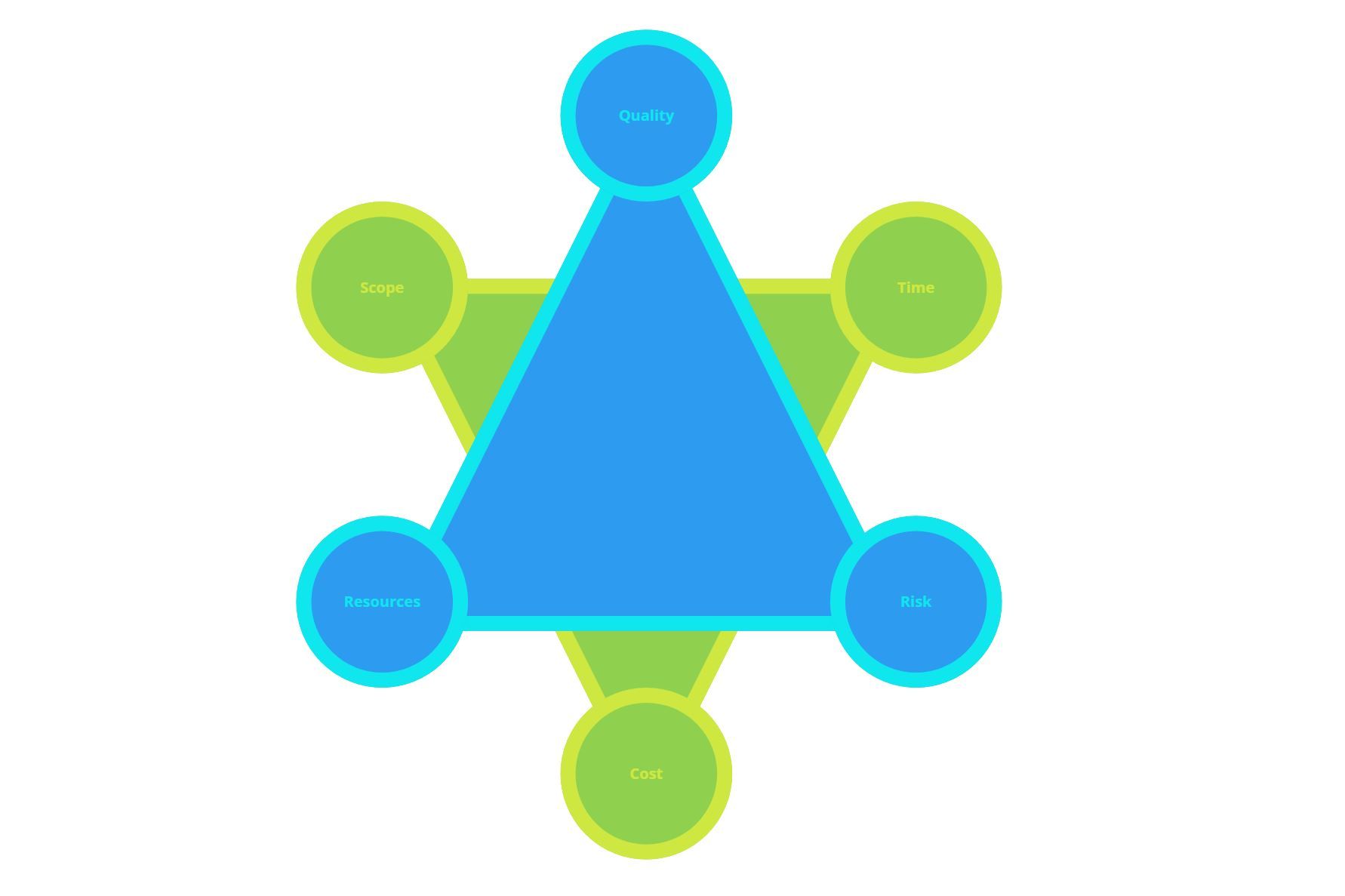Are there "Iron Triangle" variations?

Absolutely! The Iron Triangle of project management, also known as the Triple Constraint, has been expanded to include other crucial aspects of project management that must be balanced along with scope, time, and cost. Here are a couple of common variations:
- Project Management Diamond: This model adds "Quality" to the original Iron Triangle. Quality is a product of the balance between scope, time, and cost. If any of these three are out of balance, it can affect the quality of the final product or outcome. For example, if you reduce the time or cost too much or expand the scope too quickly, the quality of the project may decrease.
- Project Management Star: This model adds "Risk" and "Resources" to the original Iron Triangle, resulting in a pentagon shape. Risk refers to the potential problems that might affect the project. While resources refer to the people, materials, and equipment needed for the project.
- Six Constraints Model: This model adds "Quality," "Risk," and "Customer Satisfaction" to the original Iron Triangle. The addition of customer satisfaction emphasizes that a successful project needs to be delivered on time, within scope, and on budget and to meet or exceed the customer's expectations.
Each model highlights that project management is more than just balancing scope, time, and cost. It's about managing all the different aspects of a project to successfully deliver a result that meets the needs and expectations of the stakeholders.

